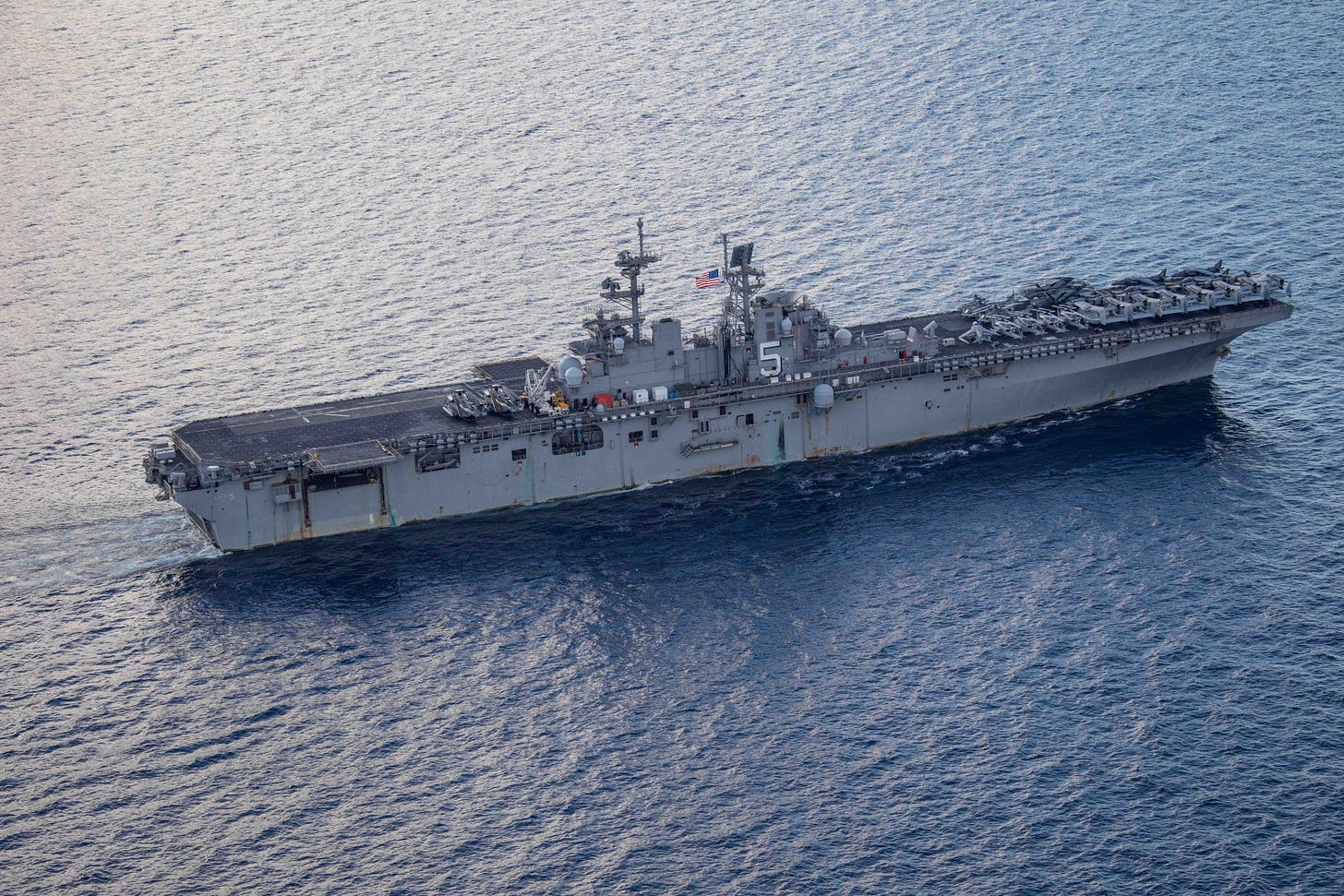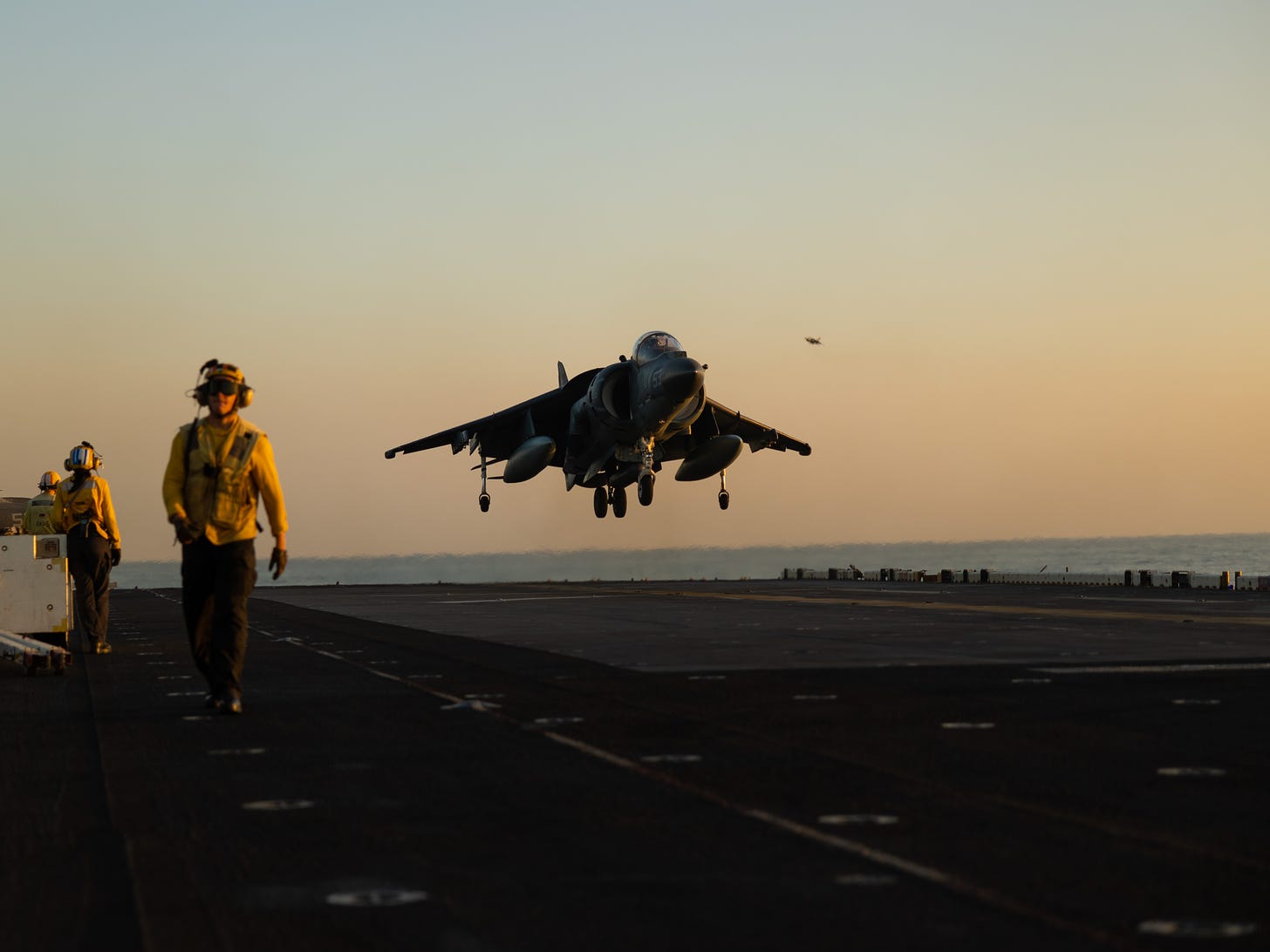CDR SALAMANDER

When looking at the experiences and lessons of US and allied - but mostly US - actions in the Red Sea to counter the attacks on global shipping from the Houthis in Yemen, here and on Midrats since the invasion of Israel from Gaza back in October, we’ve reviewed a lot of the surface action, and even some of the work from USN nuclear powered carriers in the area. In the background there has been another player in the game, one that echoes some of the topics we’ve covered over the years; utility of smaller carriers/diversified risk/diversity of platforms/flexibility/etc.
PHIBRON 8 and her "big deck” USS Bataan (LHD 5) have spent the last few months in the Mediterranean.
Since July, she has been deployed with USS Carter Hall (LSD 50) and USS Mesa Verde (LPD 19) with their embarked ~2,000 Marines of the 26th MEU and other units.
3 weeks ago, CBS News’ Charlie D'Agata visited BATAAN;
Did you notice that flight deck?
Old school, baby … no fancy battle penguins … no sir, that air wing has Harriers from Marine Attack Squadron 231 (VMA-231) … and they are not just hanging out in the Med.
Under cover of darkness, a single fighter jet roars as it rips across the deck of the USS Bataan, a vast US assault ship. Moments later, a second jet follows.
But when Yemen's Houthis began firing missiles and flying drones into commercial ships in the Red Sea, the crew of the USS Bataan found themselves having to adapt to air combat, sending jets out to try and shoot them down.
"I never imagined I was going to be doing this when we launched," says lead pilot Capt Earl Ehrhart.
"We took a Harrier jet and modified it for air defence," Ehrhart tells me. "We loaded it up with missiles and that way were able to respond to their drone attacks."
Who are the Houthis?
US and UK strikes fail to slow Houthi attacks
An experienced fighter pilot, Ehrhart says he has intercepted seven Houthi drones. But when flying so close to these explosive devices, he says, every interception carries great risk.
"They are shooting at us all the time, so we need to be even more focused. Our systems need to be primed so we can stay safe."
Grab your globe/chart/googleearth … and figure that out for yourself. That is some serious flying.
What a great story. We need to find ways to tell it more.
As a final note, if you have not already, notice that their deployment has been extended well past six months, as expected. How much longer? We’ll see.
This is just another reminder that the US Navy is not large enough. We do not have enough of everything to do what our nation requires of her.

No comments:
Post a Comment